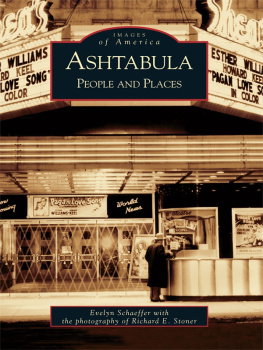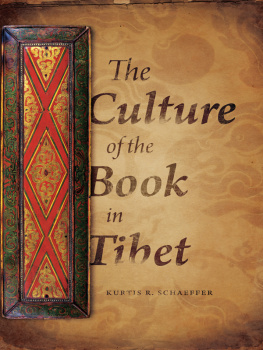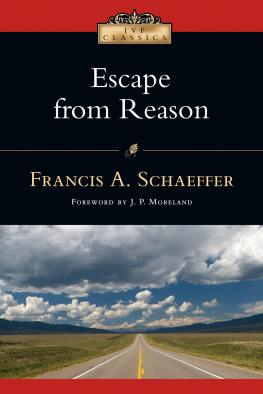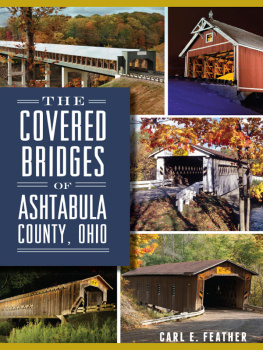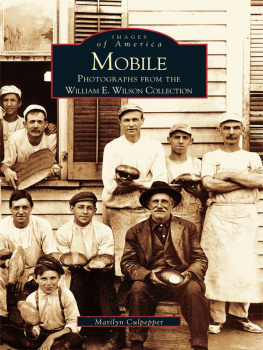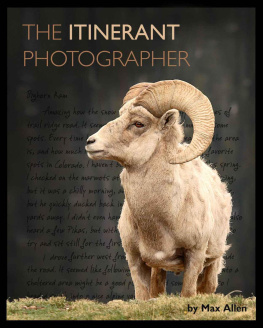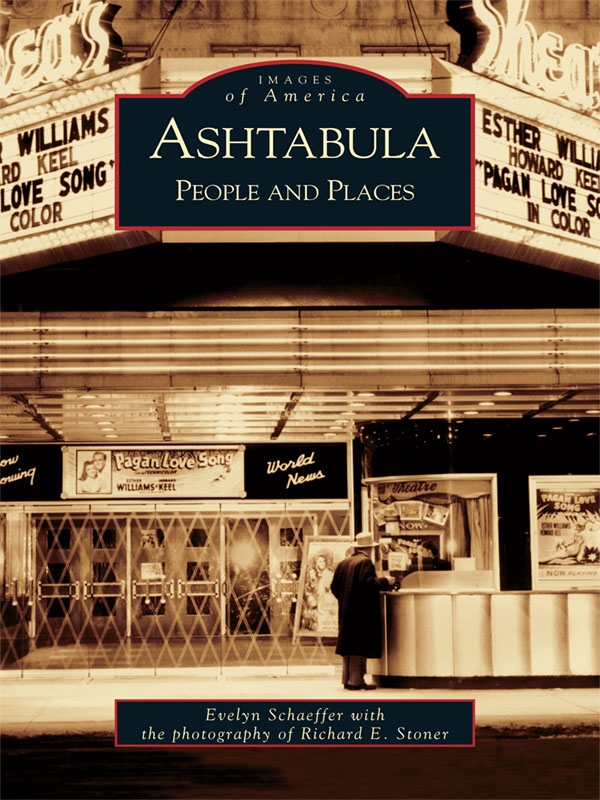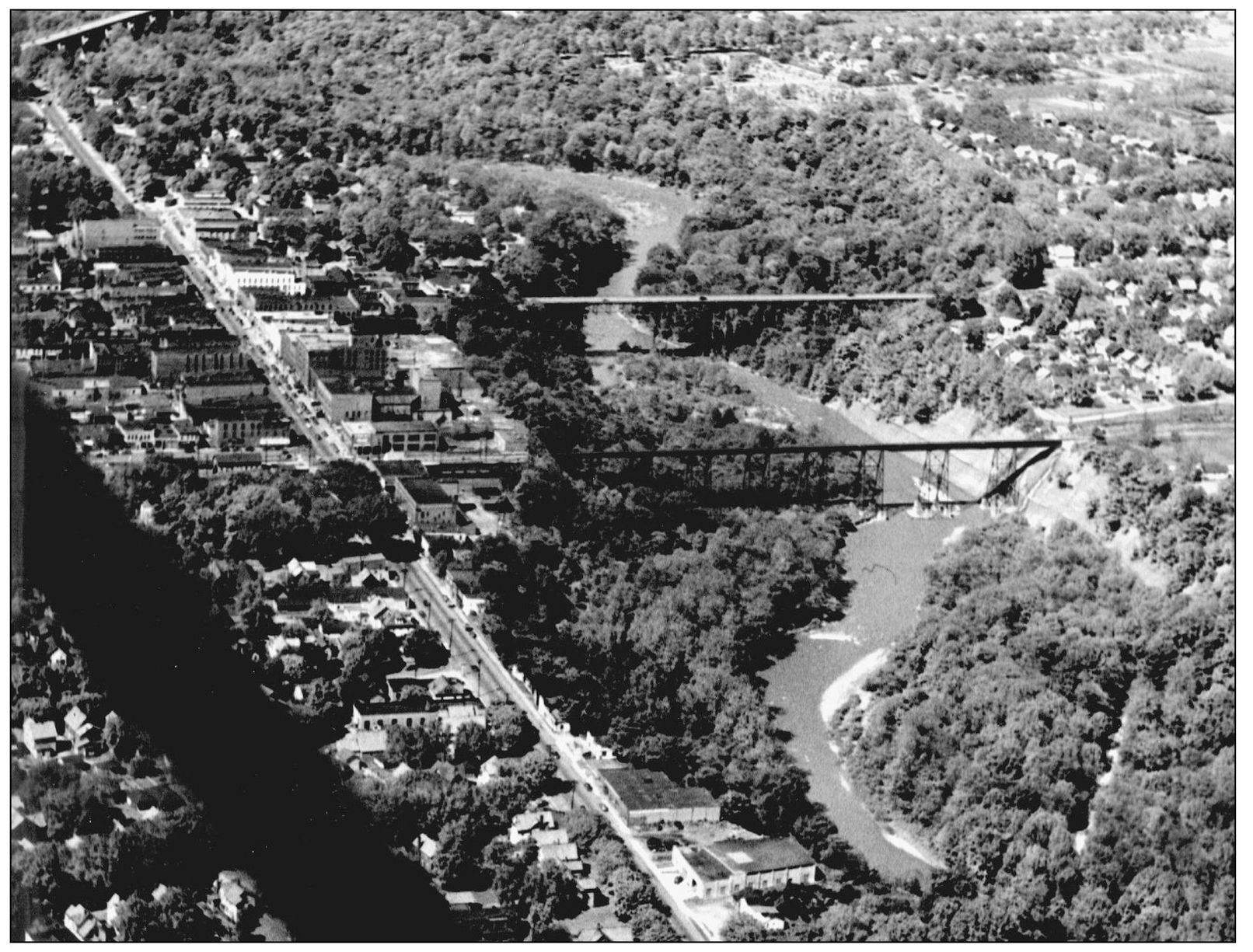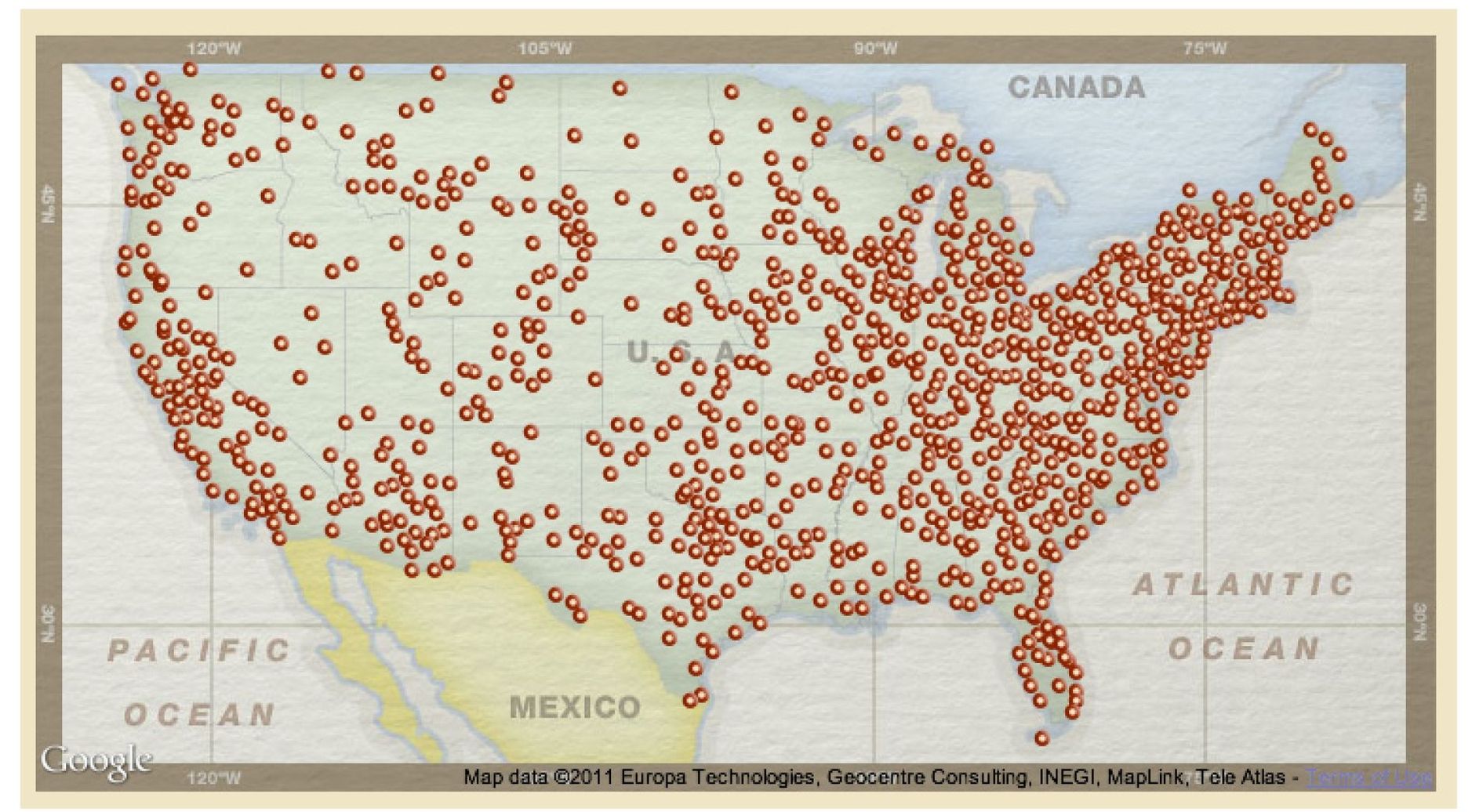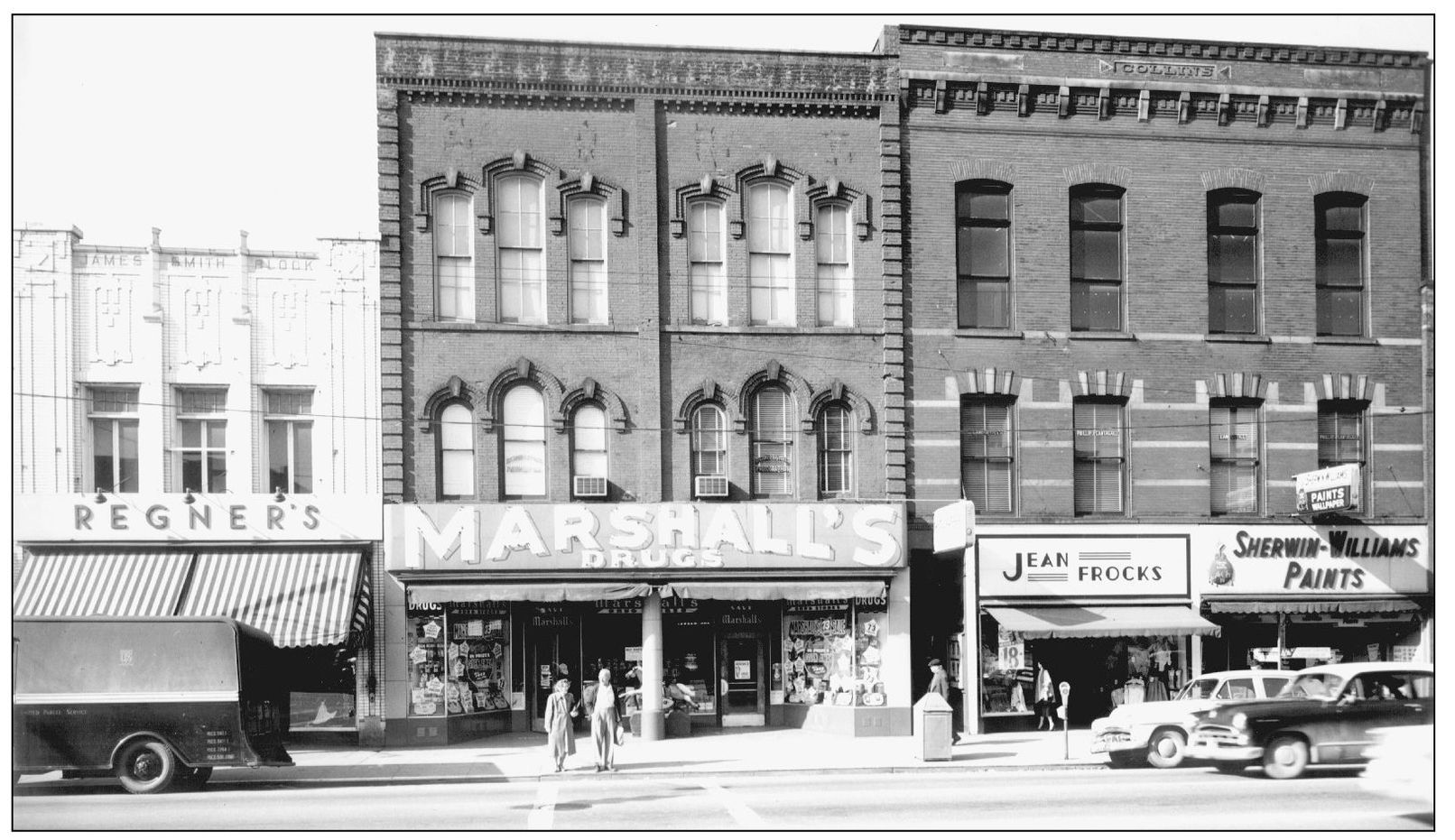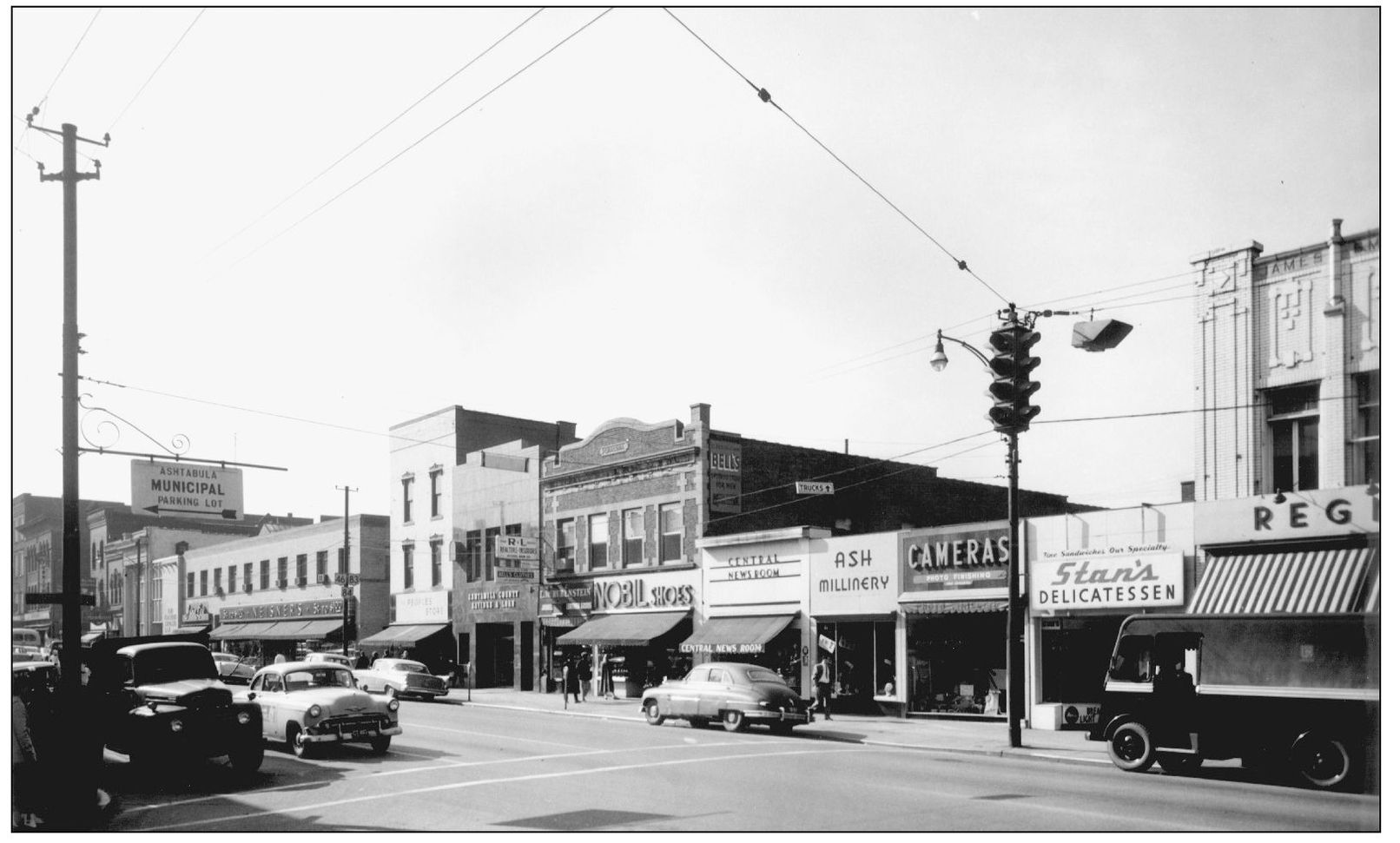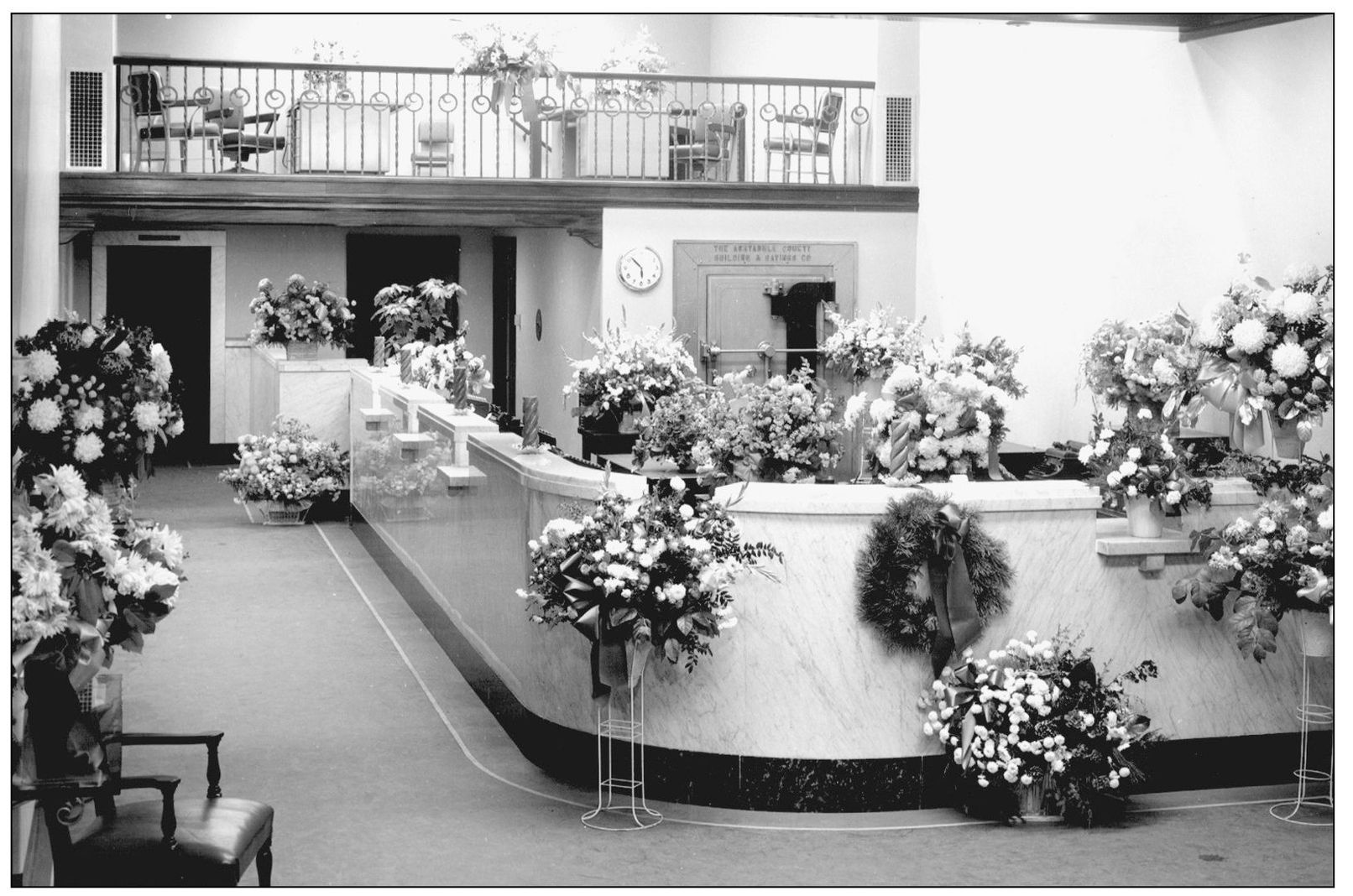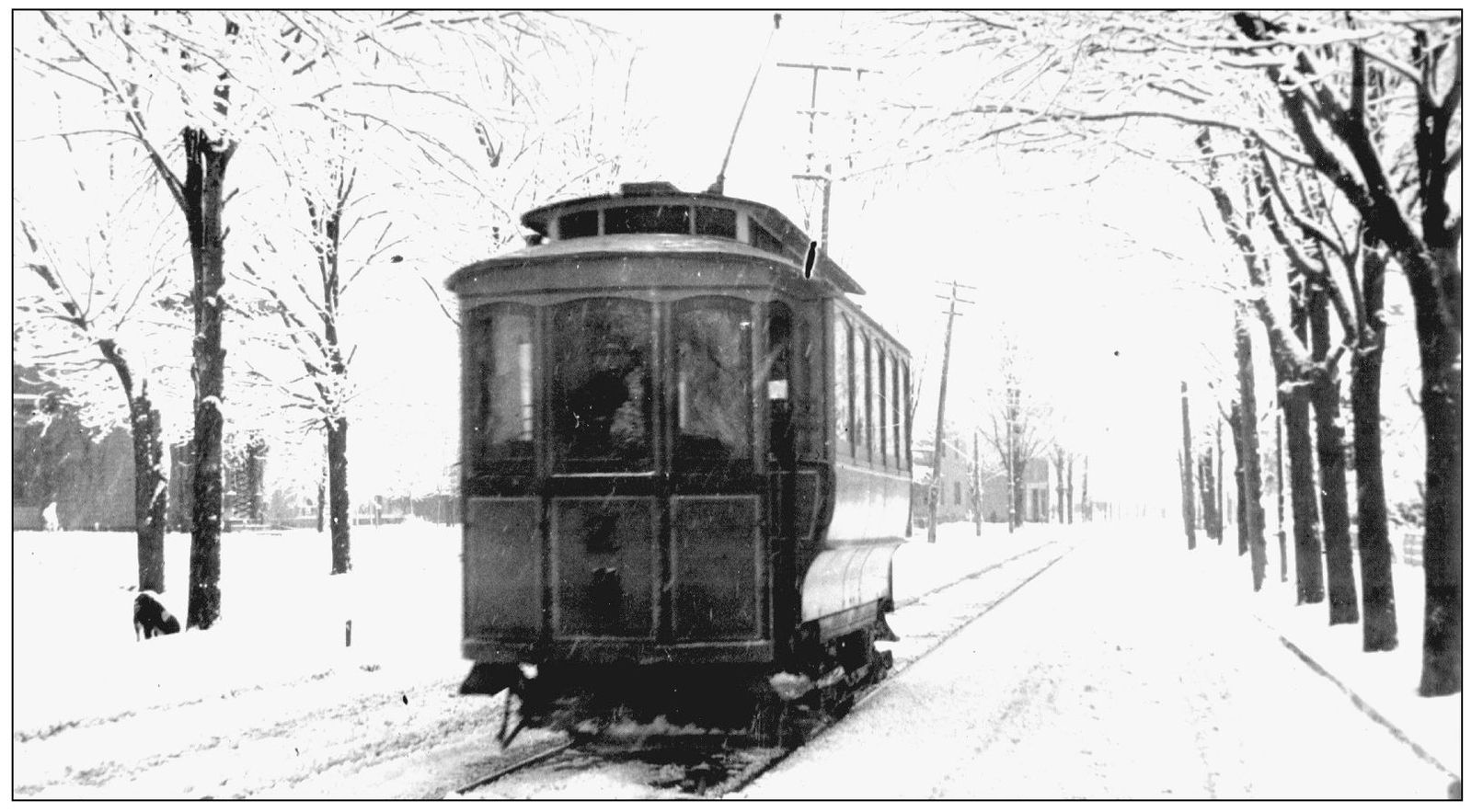One
MAIN STREET TO MAIN AVENUE
WHAT WAS IT LIKE UPTOWN?
What was it really like in the days that the postwar generation remembers from childhood, the days when Ike was president and words like progress conjured up nothing but images of a bright future? Was Ashtabula really the big, bustling, prosperous city we remember, or did it just seem big because we were small and seem prosperous because we were children? We all know that the lens of nostalgia can be unreliable. But the lens of a camera, particularly a camera wielded by a professional photographer with an eye for both detail and context, can provide a truer picture of our past. This chapter is organized around Richard Stoners photographs of Ashtabulas main business district. The photographs were taken in the 1950s, when Stoner himself was a Main Avenue businessman.
Main Street became Main Avenue in 1930, and its cross streets, which until then had been named, were given numbers instead. Only Center Street officially retains its name, although West 46th Street is still commonly referred to as Spring Street. This chapter begins on the west side of Main Avenue at Stoners studio, located at 4539 Main Avenue over Marshalls Drug Store, as he noted in his professional advertising. From there, the photographs take us south along Main Avenue across Center Street and the railroad tracks to the old Church Street and South Park. Then we return to Stoners studio and proceed north to the heart of the old village settlement, Division Street (West 44th Street), next to North Park. At the intersection of Main Avenue and West 44th Street, the photographs begin to capture the east side of the street, moving south past West 46th Street (Spring Street) almost to the tracks. Along the way, older photographs help to fill in the story of uptown and the people who shaped it and who continue to invest their lives in it.
It is important to remember that the landmark buildings that we mourn as lost to the urban renewal movement of the 1960s and 1970s were often replacements of landmarks built by previous generations. There were several distinct periods of rapid national expansion, which uptown Ashtabulas streetscape reflects. The original frame buildings put up by the earliest settlers and merchants on Main Street replaced log structures, and they were almost completely replaced with multistory brick blocks and arcades in the postCivil War building boom. Many of these were ravaged by fire and were rebuilt or replaced by the more modern buildings of the 1890s and early 20th century. Main Street expanded and modernized in the Roaring Twenties and the postWorld War II era, and more structures were replaced. But the last generations changes seem more obvious because, for the first time, the changes in the business climate were not driven by the local businesses that anchored Americas main streets. Now we see vacant lots where many of the old blocks were and newer buildings without the upper floors that characterized the blocks and arcades that housed small shops and offices in the early 20th century.
THE WEST SIDE OF MAIN AVENUE ACROSS FROM WEST 46TH STREET, C. 1957. Marshalls Drugs occupies the entire ground floor in this image, but the Willard Block was built in 1874 as two storefronts. George Willard, druggist, occupied the right side, and Carlisle and Tyler dry goods had the left. Here, photographer Richard E. Stoner occupies the second floor, where Carlisles carpets used to be. The Collins Block was built around the same era, but the James Smith Block to the left shows distinct 1920s Art Deco design features. (Richard Stoner photograph.)
AN EVOLVING STREETSCAPE. The Chacona Block, home to Nobil Shoes, was built in the 1920s. The four one-story buildings to the right are old buildings whose upper floors burned and were not replaced. To the left is the c. 1950 red marble faade of the Ashtabula County Savings and Loan. The long, low Neisner building replaced the Smith Opera House, which burned in 1946. (Richard Stoner photograph.)
THE GRAND REOPENING OF THE BANK. The Ashtabula County Building and Savings was founded in 1901. It became the Ashtabula County Savings and Loan, and the old building was refaced in red marble c. 1950. A grand opening celebration was held when the renovations were complete. The balcony at the rear was common to bank buildings; from there, the bank examiners could observe the tellers at work. (Richard Stoner photograph.)
AN ASHTABULA TROLLEY. Trolley service between the harbor and uptown began in 1892, and by 1915, many businesses that had maintained stores in both places had closed their harbor branches. The trolleys were taken over by the city in 1922, but they soon faced competition from bus services. Trolley service ended for good in 1938. (Vinton N. Herron photograph, courtesy Florence Stoner.)

